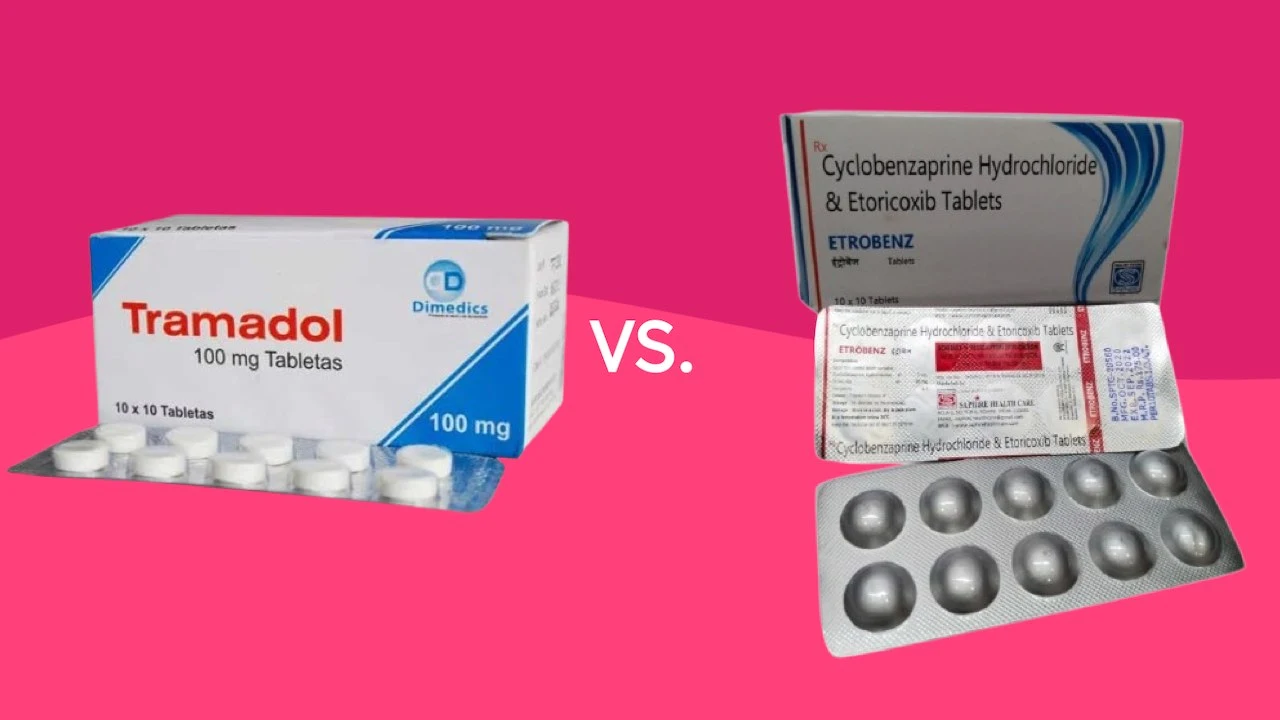combination of cyclobenzaprine and tramadol, these medications belong to different classes, their unique mechanisms of action and synergistic effects have shown promise in managing both pain and muscle spasms. In this article, we will delve into the intricacies of combining cyclobenzaprine and tramadol, exploring their mechanisms of action, potential benefits, and important considerations for safe and effective use.
What is Cyclobenzaprine?
Cyclobenzaprine is a muscle relaxant that belongs to the class of medications called centrally acting skeletal muscle relaxants. It works by acting on the brain and spinal cord to reduce muscle spasms and associated pain. Cyclobenzaprine is FDA approved and commonly prescribed for the relief of muscle spasms associated with acute, painful musculoskeletal conditions.
What is Tramadol?
Tramadol, on the other hand, is a synthetic opioid analgesic that acts on the central nervous system. It works by binding to specific receptors in the brain and spinal cord, altering the perception of pain signals. Additionally, tramadol inhibits the reuptake of neurotransmitters like serotonin and norepinephrine, contributing to its analgesic effects.
Mechanisms of Action and Synergistic Effects:
The combination of cyclobenzaprine and tramadol offers a unique approach to managing both pain and muscle spasms. While cyclobenzaprine primarily targets muscle spasms, tramadol acts on the opioid receptors and neurotransmitter systems to provide pain relief. By combining these two medications, healthcare professionals can leverage their synergistic effects, potentially providing enhanced relief compared to using either medication alone.
Applications and Efficacy:
The cyclobenzaprine and tramadol combination has shown promising results in managing various types of acute and chronic musculoskeletal conditions, such as back pain, neck pain, and other conditions associated with muscle spasms and pain. The synergistic effects of this combination can potentially improve overall symptom management while allowing for lower doses of each individual medication, thereby reducing the risk of adverse reactions.
Side Effects and Precautions:
As with any medication combination, it is essential to be aware of potential side effects and precautions. Common side effects associated with cyclobenzaprine include dry mouth, drowsiness, blood pressure, and dizziness, while tramadol may cause nausea, dizziness, constipation, and drowsiness. Additionally, both medications can increase serotonin levels, which may increase the risk of serotonin syndrome, a potentially life-threatening condition.
It is crucial to carefully consider individual patient factors, such as age, comorbidities, and concomitant medications, when prescribing the cyclobenzaprine and tramadol combination. Patients with a history of seizures, liver or kidney disease, or those taking certain medications that can affect serotonin levels may require additional monitoring and precautions.
Patient Education and Monitoring:
Proper patient education on the appropriate use, storage, and disposal of these medications is crucial for ensuring safe and effective treatment. Patients should be informed about the potential side effects, drug interactions, and the importance of adhering to the prescribed dosage and instructions.
Additionally, patients should be advised to talk to their healthcare provider about any symptoms of serotonin syndrome, such as agitation, hallucinations, fever, sweating, shivering, fast heart rate, muscle stiffness, twitching, loss of coordination, nausea, vomiting, and diarrhea. These mild symptoms require immediate medical attention.
Patients should also be cautioned against drink alcohol while taking this medication combination, as alcohol can increase the risk of side effects and potentially lower the seizure threshold.
Regular monitoring of patients on the cyclobenzaprine and tramadol combination is recommended to assess symptom relief, side effects, and any potential adverse reactions. Adjustments to the dosage or treatment plan may be necessary based on individual patient responses and tolerance. It is generally recommended to limit the use of cyclobenzaprine to no more than 14 days to reduce the risk of adverse effects.
Cyclobenzaprine and Tramadol Compression
| Characteristic | Cyclobenzaprine | Tramadol |
| Drug Class | Centrally acting skeletal muscle relaxant | Synthetic opioid analgesic |
| Mechanism of Action | Reduces muscle spasms by acting on the brain and spinal cord | Binds to opioid receptors, inhibits neurotransmitter reuptake |
| Indications | Relief of muscle spasms associated with acute musculoskeletal conditions | Moderate to severe pain |
| Common Side Effects | Dry mouth, drowsiness, dizziness | Nausea, dizziness, constipation, drowsiness |
| Potential Benefits of Combination | Synergistic effects, improved symptom management | – |
| Precautions | Monitor for serotonin syndrome, seizure risk, avoid alcohol | Consider patient factors, drug interactions, proper monitoring |
| Where To Order Online? | Buy Cyclobenzaprine Online | Order Tramadol Online |
above table provides a concise overview of cyclobenzaprine and tramadol, highlighting their drug classes, mechanisms of action, indications, common side effects, potential benefits of combining them, and important precautions to consider.
Conclusion:
The combination of cyclobenzaprine and tramadol offers a promising approach to managing both muscle spasms and pain associated with musculoskeletal conditions. While this combination can potentially provide enhanced symptom relief, it is crucial to be aware of potential side effects, precautions, and patient-specific factors. Healthcare professionals must carefully evaluate each patient’s individual circumstances, weigh the potential benefits and risks, and provide proper education and monitoring to ensure safe and effective use. By understanding the nuances of combining cyclobenzaprine and tramadol, healthcare providers can make informed decisions and personalize treatment strategies for their patients.

